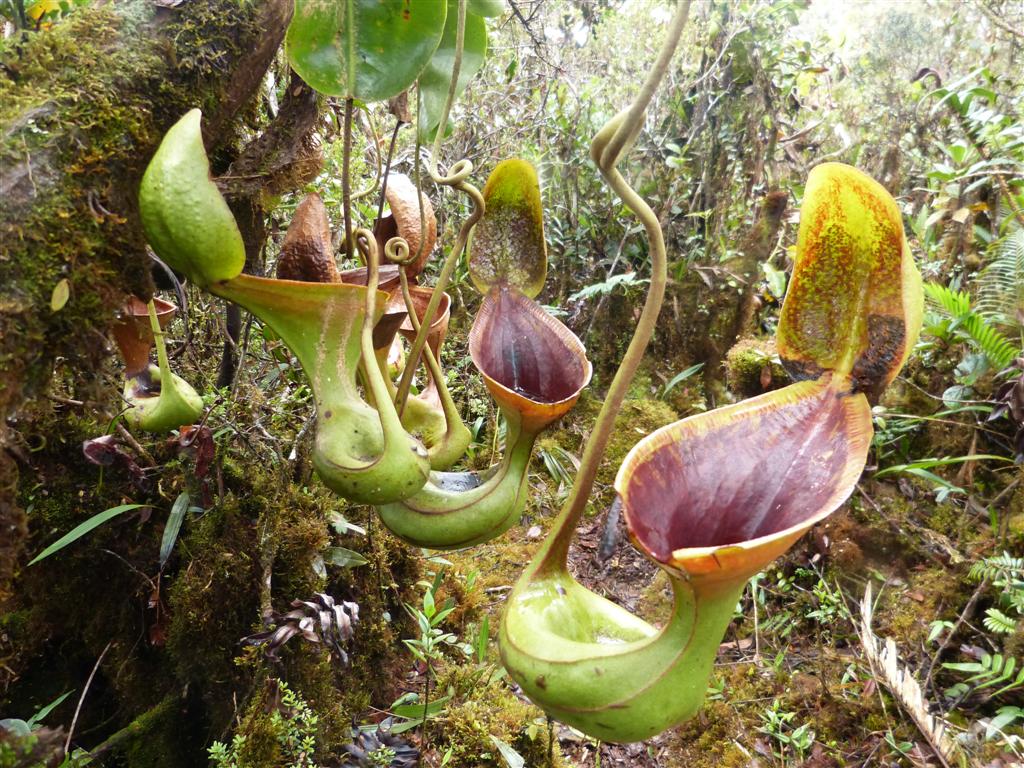I have visited Keoladeo National park (formerly Bharatpur Bird sanctuary), in the north of India in Bharatpur, Rajastan some years ago.
The visit was part of a two weeks trip through India, that included also the visit of two other NP’s and some monuments like the Taj Mahal and the red fortress of Agra.
The park is a man- made wetland, for years it has been the private hunting ground for the local maharaja, but now it is a famous natural reserve, world famous for its birdlife (366 species!!!) and therefore recognized as a world heritage site.
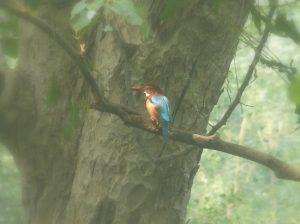
I entered the reserve with a rickshaw, though this means of transport can only be used for the main entrance road. Other parts of the reserve are easily accessible on foot. There are no virtually no height differences and no dangerous animals.
As I mentioned before, the park is rich in birds, especially water loving birds like herons, storks, egrets, cormorants and ducks. Close to the entrance several trees were filled with nests of painted storks (Mycteria leucocephala) accompanied by little cormorants (Microcarbo niger) and little egrets (Egretta garzetta). Other birds present were peacocks, bee-eaters, kingfishers and various birds of prey.
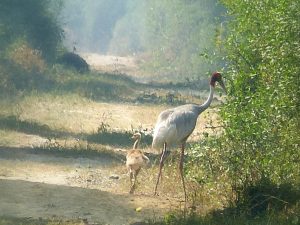
Besides of the birds you can see also reptiles like monitor lizards and pythons. Unfortunately I did not see any pythons during my visit. But based on the number of burrows I have seen, Keoladeo NP is home to a healthy population of these large snakes.
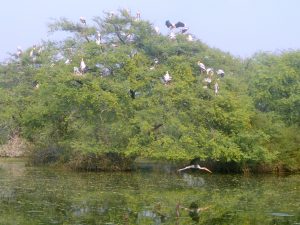
As soon as I entered the park I spotted a rhesus macaque (Macaca mulatta) and further more nilgais (Boselaphus tragocamelus), Asia’s largest antelope could easily be seen. The nilgai or blue bull can exclusively found at in Indian subcontinent. You can find them in large parts of India and just over the borders with Nepal and Pakistan. The males have a shoulder height of approximately 1.50 meter and weigh about 240 kilograms.
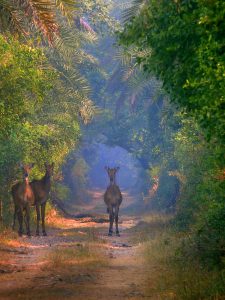
Some Utricularia
For some reason I did not expect to see carnivorous plants, but it turned that I was wrong!
Quite soon after arrival I found a pond with yellow flowering plants in the water, unmistakable a bladderworth. These yellow flowers belonged to Utricularia aurea (“golden bladderwoth”). It is one of the most common aquatic bladderworths in tropical Asia. You can easily identified this species by the long seed capsules.
On my second in the park there was another surprise, I stumbled on many white flowering plants in the water. The flower scape was supported by a kind a raft formed by a whorl of cigar shaped floats. This bladderworth was later identified as Utricularia stellaris (“star shaped bladderworth”).
The identification of this species was not easy. This species usually has yellow flowers though in some populations they have white flowers with violet nerves.
U. stellaris is closely related to U. inflexa (a white flowered species). These two species have been considered as one single species in the past. The plants that I have observed in Keoladeo NP seem to represent some kind of intermediate between this species (not really uncommon).

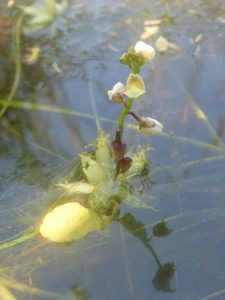
The plants that I observed in this park grew much more vigorous than mentioned in literature. Peter Taylor has mentioned in his monograph on Utricularia a maximum number of 12 flowers for U. stellaris. Quite remarkable is that the plants that I did observe had up to at least 23 flowers and also had more floats than stated in literature. Utricularia stellaris is widespread in Africa and has a patchy distribution from Asia to North Australia.
